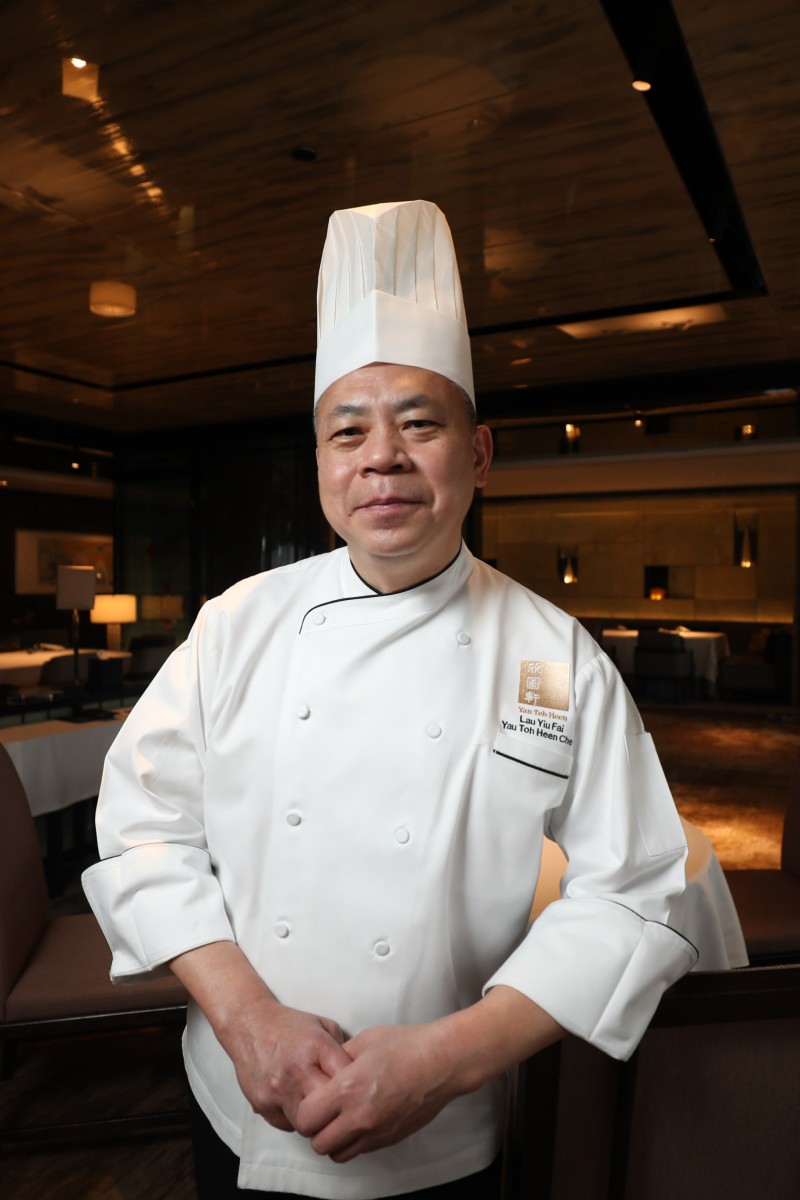
Study Buddy (Explorer): Cooking Chinese food is like practising kung fu, says Hong Kong Michelin-star chef Lau Yiu-Fai
- Each week, this page presents an interesting story that we have adjusted to be more accessible for all English learners
- Check your reading comprehension using the questions below or in the linked Kahoot! game
 Lau Yiu-fai of two-Michelin-star Yan Toh Heen, at the Regent hotel in Tsim Sha Tsui, reveals what was it like being an apprentice chef in 1970s Hong Kong. Photo: Xiaomei Chen
Lau Yiu-fai of two-Michelin-star Yan Toh Heen, at the Regent hotel in Tsim Sha Tsui, reveals what was it like being an apprentice chef in 1970s Hong Kong. Photo: Xiaomei ChenContent provided by the British Council
Read the following text and answer questions 1-9 below:
Interview with Lau Yiu-fai, Michelin-star chef based in Hong Kong
[1] My mother and paternal grandmother were good cooks. When I was a child, my family had financial difficulties, so just being able to eat made us happy. We ate family-style dishes like braised pork. I still like eating it today.
[2] [Back then, it was most important] to earn more money. The better you were, the faster you moved to another job, so I knew I needed to learn more to earn more money. I liked cooking at the time, though I didn’t have enough strength to hold a wok. Some young cooks bought a wok and practised holding it at home. I only practised in the kitchen. Cooking Chinese food is like practising kung fu – you need to learn the hard way.
[3] If you teach young cooks now, they don’t necessarily want to learn. During our time, it wasn’t like that – if you were hard-working, then the master chef would teach you something. He wouldn’t necessarily teach all of us apprentices. If we were willing to learn, he let us copy his recipes by hand – no photocopying. That was his sign of affection towards you.
[4] The stir-fry chefs were tough – if you made, say, beef dry-fried rice noodles and didn’t do it right, they would dump what you made on the table. Today, we don’t do that – we talk to the young chefs nicely to encourage them to improve.
[5] One person alone cannot create a dish. Before, it wasn’t common to use Western ingredients in Chinese cuisine. Now, we use Australian Wagyu beef. We got some from the [Regent Hong Kong] hotel’s Western restaurant to experiment with and thought it tasted good. The meat’s texture is tender, and we wok-fry it with peppercorns. We also use Japanese pork from Kagoshima, wok-fried with eggplant and garlic.
[6] [Guests] have discerning tastes these days. Some guests claim they want to eat healthy dishes, but they order food that isn’t that healthy. A few years ago, we worked with a dietitian to offer a healthy menu, but guests didn’t really order anything from it.
[7] Nevertheless, our aim is to give guests relatively healthy dishes because I like to eat healthily, too. Our double-boiled soups are very aromatic but don’t have any oil. I don’t like to see any oil in them.
[8] I used to do Muay Thai in my 20s. What I like about boxing is that it’s like life: once you go into the ring, no one can help you – it’s just you and your hands. If you aren’t careful, you will get hit, so you need to practise a lot, which is like cooking and life.
[9] If you don’t try to improve, then you won’t be able to compete – like with Michelin. You have to think of new dishes but also be consistent. We have been around for a long time, and I trust our team to do well.
Source: South China Morning Post, March 29
Questions
Play a Kahoot! game about this story as a class or with your friends by clicking on the link here.
Or play on your own below to test your understanding:
1. What dish from Lau Yiu-fai’s childhood is mentioned in paragraph 1?
2. Based on paragraph 2, how is cooking Chinese food like kung fu?
A. Both demand a lot of practice and effort.
B. Both test one’s creativity and adaptability.
C. Both can only be learned from a skilled master.
D. none of the above
3. Find a word in paragraph 3 that refers to “a person learning a trade”.
4. According to paragraph 4, what happened in the past when young chefs made mistakes?
5. How have Lau’s creations evolved according to paragraph 5?
A. He includes ingredients from other cuisines.
B. He uses more plant-based ingredients.
C. He has replaced all beef dishes with pork ones.
D. He experiments with different food preparation techniques.
6. What was the response to the healthy menu in paragraph 6?
A. It was a success.
B. It was met with criticism.
C. It was extremely popular with younger customers.
D. none of the above
7. Read paragraphs 5 to 7, and decide if the following statements are True, False or Not Given. (4 marks)
(i) Lau switched to Australian Wagyu beef in his dishes because it was inexpensive.
(ii) Most of Lau’s guests now order dishes that are low in sugar and calories.
(iii) Lau’s restaurant only uses imported meat when preparing classic Hong Kong dishes.
(iv) The double-boiled soups on Lau’s menu taste delicious without being oily.
8. What two things does Lau compare Muay Thai to in paragraph 8?
9. According to paragraph 9, which of the following qualities are needed to be a good chef?
A. perseverance and patience
B. consistency and competitiveness
C. consistency and patience
D. competitiveness and optimism
Answers
1. braised pork
2. A
3. apprentice
4. The food they prepared was thrown on the table.
5. A
6. D
7. (i) F; (ii) F; (iii) NG; (iv) T
8. He compares it to life and cooking.
9. B
